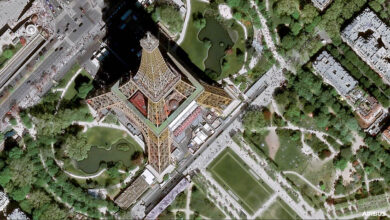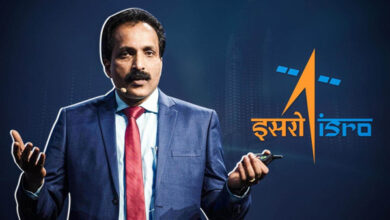By R. Anil Kumar
Bangalore, November 6. Reusable Launch Vehicle – Technology Demonstrator (RLV-TD) is one of the most technologically challenging endeavours of ISRO towards developing essential technologies for a fully reusable launch vehicle to enable lowcost access to space.

The configuration of RLV-TD is similar to that of an aircraft and combines the complexity of both launch vehicles and aircraft. The winged RLV-TD has been configured to act as a flying test bed to evaluate various technologies, namely, hypersonic flight, autonomous landing and powered cruise flight.
In future, this vehicle will be scaled up to become the first stage of India’s reusable two stage orbital launch vehicle.
RLV-TD consists of a fuselage (body), a nose cap, double delta wings and twin vertical tails. It also features symmetrically placed active control surfaces called Elevons and Rudder. This technology demonstrator was boosted to Mach no: 5 by a conventional solid booster (HS9) designed for low burn rate. The selection of materials like special alloys, composites and insulation materials for developing an RLV-TD and the crafting of its parts is very complex and demands highly skilled manpower. Many high technology machinery and test equipment were utilised for building this vehicle.
The design is evolved by meeting various design criteria dictated by aerodynamics, aero elasticity, structures, propulsion and controls. The tandem arrangements resulted in a large aerodynamic instability about the centre of gravity. This instability is reduced by four fins placed on the base shroud near the base of the vehicle.
The fins have both fixed and movable (outer) parts; the aerodynamic control is through the movable fins. During initial lift-off, where the dynamic pressure is very low, the pitch–yaw controls are achieved through secondary injection thrust vector controls (SITVC) and the roll control is through roll RCS thrusters. As the dynamic pressure builds up, the movable fins are activated to control the vehicle in all three axis as per a Vikram Sarabhai Space Centre report.
The ascent configuration is a tandem arrangement with a wing-body configuration on the top of a 9 ton solid rocket booster.

ISRO has been taking a number of steps to reduce the costs of launching satellites through reuse of launch vehicle components and increase the frequency of such launches. Towards this end, ISRO has been developing and testing its technologies through technology demonstrations in the form of the Reusable Launch Vehicle Technology Demonstrator (RLV-TD). The technical information given here is based on information from Current Science special section on RLV-TD comprising of detailed papers from ISRO.
The RLV TD is a hybrid vehicle that combines the technologies of an aircraft and launch vehicle, one on top of the other – a configuration never attempted before. The main objectives of the RLV-TD are to reduce cost of launch by increasing reusability and to increase reliability by achieving a Two Stage To Orbit (TSTO) capability. It is a different approach from SpaceX and Blue Origin. The ISRO approach to a reusable launch vehicle is a winged body space plane while SpaceX and Blue Origin are recovering and reusing stages of their existing rockets, in order to reduce launch costs.





